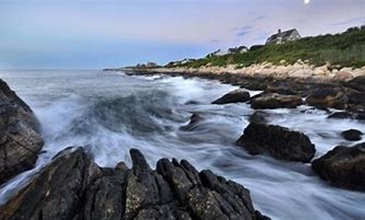U.S. Senate Passes Bipartisan Resolution Designating September 21-28 National Estuaries Week

Washington, D.C. – U.S. Senators Sheldon Whitehouse (D-RI) and Bill Cassidy (R-LA) today announced that the Senate has designated September 21 through September 28, 2024 as National Estuaries Week. Whitehouse and Cassidy led a bipartisan group of 29 Senate colleagues in introducing the resolution calling for the protection and restoration of America’s estuaries.
“Estuaries like the Ocean State’s beautiful Narragansett Bay are at the center of daily life and the economy across the country,” said Whitehouse, who serves as co-chair of the bipartisan Senate Oceans Caucus. “As climate change intensifies, I am glad to join my Senate colleagues from both sides of the aisle to recognize and recommit to protecting our estuarine environments from increasing threats.”

Sheldon Whitehouse
“Louisiana works hard to protect and rebuild our eroding coastline which is an economic and communal lifeline for our state,” said Dr. Cassidy. “Protecting our estuaries is essential to preserve Louisiana’s way of life.”
Whitehouse’s bill to reauthorize the National Estuary Program at nearly double its previous annual funding levels became law in January 2021. The late Rhode Island Senator John Chafee established the National Estuary Program in 1987 to protect and restore estuarine habitats threatened by pollution, overdevelopment, and other harms. Rhode Island’s Narragansett Bay is the largest estuary in New England and was one of the original six estuaries in the program, which has brought millions of dollars in federal funding to the state over the years.
An estuary is a partially enclosed, coastal body of water where freshwater from rivers and streams meets an open body of water, typically the sea or Great Lakes. Estuaries provide key ecosystem services that protect human health and safety, including water filtration, flood control, shoreline stabilization, and erosion prevention. They also protect coastal communities during increasingly frequent hurricanes and other extreme weather events.
“National Estuaries Week is a time for to all appreciate the countless recreational, economic, and environmental benefits that our estuaries provide while acknowledging that they are under threat from a warming climate and continued development that can damage these national treasures,” said Daniel Hayden, President and CEO of Restore America’s Estuaries. “We hope you take time during National Estuaries Week to enjoy your local estuary and celebrate the benefits it provides.”
“Estuaries embody vital connections between land and sea and among diverse wildlife and human communities,” said Darcy Young, Executive Director of the Narragansett Bay Estuary Program. “During National Estuaries Week, we celebrate coastal regions while raising awareness of their vulnerability and committing ourselves to the work that protects them.”
“We are drawn to estuaries for many reasons. Not only are they beautiful, they fuel our economy, offer many opportunities to recreate, sustain our fisheries, and help protect us from the impacts of climate change,” said Caitlin Chaffee, Manager of Rhode Island’s Narragansett Bay National Estuarine Research Reserve. “We proudly celebrate Estuaries Week as a time to acknowledge the importance of estuaries and rededicate ourselves to safeguarding them and the benefits they provide to natural and human communities.”
Estuarine regions of the United States contribute disproportionately to the national economy. According to the National Oceanic and Atmospheric Administration, estuary regions cover only 13 percent of the land area of the United States, but contain nearly 40 percent of the population and make up almost half of the country’s economic output.

Estuaries face ongoing threats. The U.S. Fish and Wildlife Service estimates that the continental United States has lost more than half of its wetlands since the 1780s. Additionally, bays across the country that once served as important fisheries are now considered “dead zones” filled with algal blooms, chemical waste, nutrient pollution, and marine debris.
The resolution is available here.
